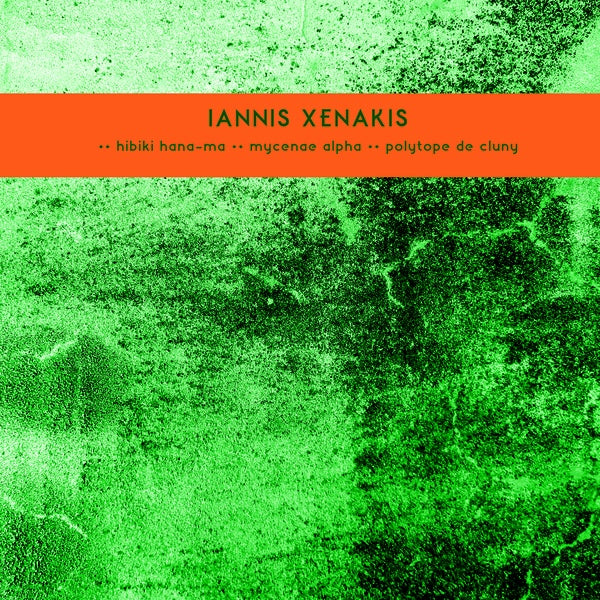1
/
of
1
XENAKIS, IANNIS - Les Polytopes I: Hibiki Hana-Ma / Mycenae Alpha / Polytope De Cluny
Regular price
$27.00 USD
Regular price
Sale price
$27.00 USD
Unit price
/
per
Couldn't load pickup availability
"Hibiki Hana-Ma" was created in 1969 for the Steel Pavilion of the Japan Iron and Steel Federation at the Expo 1970 in Osaka as musical part of a multimedia show. Even though the work does not bear the designation in its title, it can be already regarded as a Polytope: it was created for a specific architectural location, lasers and mirrors have been installed: a light choreography by the Japanese artist Keiji Usami accompanied the spectacle. This concept of synchronized laser and light choreographies -- now directed by Xenakis himself -- can soon be found in Polytope de Cluny 1972 and 1978 again in the Diatope (La Légende d'Eer). But Hibiki Hana-Ma is also a hermaphrodite in another sense: on the Japanese record release from 1970 Seiji Ozawa is credited as conductor of the Japan Philharmonic Symphony Orchestra and Kinshi Tsuruta as Biwa-soloist (a traditional Japanese string instrument). By listening one quickly realizes that the music is not orchestral or Biwa music, but only uses electronically processed recordings as source material for an electroacoustic music. Xenakis's first explicit Polytope (Polytope de Montreal 1967) was originally conceived for four orchestras, and then transferred to tape for practical and financial reasons. The first concept of a Polytope was an installation with live-orchestra-music -- as the tape version is a recording without further electroacoustic treatment, it is not included in this release. Like Hibiki Hana-Ma, Mycenae Alpha is also a special case but for another reason: it was composed for his last Polytope (Polytope de Mycènes 1978) and consists exclusively of synthetic sounds, realized with his graphic system UPIC. The result is rough and sober and marks the beginning of his last electroacoustic compositions, shifting back to purely electronic music. With Hibiki Hana-Ma and Mycenae Alpha, the first side of the record vividly demonstrates the vast musical range of the Polytopes, from recorded orchestral sounds to purely electronic parts. The synthesis of the most diverse musical materials had taken place in between, especially in compositions like Persepolis (1972) and the joyful-noisy Polytope de Cluny (1972) that is presented here on Side B. Polytope de Cluny was performed several times a day for six months in Paris and was a real multimedia event: the audience could relax on pillows on the floor of an old Roman bath in the middle of Paris and listen to Xenakis's architecture of sound and light." - Karlrecords .
View full details


